2013 Range Rover Review
Road, rocks and sand, conquered in Morocco in the new big-daddy Range Rover
By Shahzad Sheikh
Harbouring a long-standing admiration and respect for the iconic Range Rover, like most fans of the Land Rover flagship, I have very distinct views regarding what constitutes a proper Rangie. The 2002 model has had a decade-long run and has been the most successful iteration so far and with reason.
It was good, very good. Proud, dignified, supremely capable, extremely desirable and managing to encapsulate the essence of a luxury off-roader that could roll up to the red carpet at the poshest of posh premieres, and scrabble across a river whilst being pummelled by a raging stream, and generally tackling the toughest terrain Mother Earth could throw at it. (Read my tribute to the previous car here)
Like most others the initial photographs of the all-new Range Rover had left me a little startled – yes it still looked like a big daddy Range Rover, but it was different – a lower roof, more sloping windscreen, rounded corners, moulded in front bumper, lights that ran into the side fenders, and giant gills on the door that weren’t gills at all.
It would have been easy to react strongly, but it was definitely one of those ‘reserve judgement’ moments. I would not make up my mind about this one until I saw it in the metal, or should that be aluminium?
All the new stuff
And being all-alloy, the new monocoque structure is 39% lighter than the outgoing steel-bodied version with a claimed weight-saving of up to 420kg (although comparing the same engines, it’s more like 350kg, which is still significant!). At just under 5m long it’s about the same length as before (despite appearing larger) but is more aerodynamic due to the softer lines and a 20mm lower roofline (at reduced height).
With a 42mm longer wheelbase, there’s nearly 12cm more legroom in the back, and emphasising the car’s luxury status, it’s now offered with ‘Executive Class’ seating, which basically runs the centre console all the way through to the rear and provides two individual rear seats rather than a bench.
The quality, fit and finish has improved, the number of buttons has diminished, the electronics are bang up to date, there’s a big 8-inch central screen with improved interactivity, seat massage is now available, and there’s a high-end Meridian sound system which for the top models boasts 1700W and 29 speakers including a subwoofer.
There’s also 12.3-inch display for the main instrument panel, which describes what the Terrain Response system is doing when engaged, and that, by the way, is now fully automatic. Which means sensors automatically detect what kind of terrain you are on (sand, rocks, mud, gravel etc) and select the right modes. You do still have the option of selecting them manually, setting the ride height and opting for low ratio.
The Range Rover, naturally features a full-time 4×4 with 50/50 torque split and a two-speed transfer box working with those clever traction and stability systems. The completely re-engineered air suspension retains the traditional class-leading wheel travel and exceptional articulation with 260mm of movement at the front and 310mm at the rear (compared to less than 200 for most rivals it’s claimed), but now features two-channel Dynamic Response active lean and Adaptive Dynamics continuously variable damping – all of which means it leans a lot less than the previous car.
As for going through water, wading depth has improved by 200mm to 900mm (nearly 3ft), partly due to the suspension, and partly because it now has air intakes placed strategically at the sides of the engine bay just under the traditional clamshell bonnet. The chassis is stronger and stiffer than ever, and if you really must tow with your Rangie, be assured that you can haul upto 3500kg behind it.
So what’s it like to behold?
Magnificent actually. It’s a grower. It takes time to get used to. But it appears huge in person and has unmistakable road-presence. You are also left in no doubt that this is still a Range Rover. All the signature Range Rover design cues are there, including the castellated bonnet and floating roof (now available with the largest full-length sunroof ever) and the black pillars fully smoothed into the glass house.
From the rear it looks very familiar, and thankfully retains the split opening tailgate (now powered) which allows you to plonk yourself on the lower part and watch the world go by if it so pleases.
Those massive slats in the front doors, which don’t actually serve any purpose at all apart from the break up the flat space are something I still struggle with (the older fender vents made more sense to my sense of aesthetics) particularly when they are presented in contrasting colours. At the front I miss the clearly defined forward jutting bumper, and I feel the grilled could be a little taller too, with those front side slats desperately trying to fill up the gap.
Overall though, it gains your acceptance thanks to that familiar silhouette. Well almost familiar. With the reduced glasshouse, my biggest concern was that the majestic seating-position that is synonymous with the Range Rover would have been compromied, and even more importantly the elbow on the door sill stance might not be possible, let alone natural.
I’m delighted to report that the ‘Command Driving Position’ as Land Rover calls it, keeps its throne-like qualities with an upright and elevated position that is said to be typically over 90mm higher than other premium SUVs. You still feel utterly regal and quite simply the master of all your survey.
And that includes the interior. A cleaner cabin, with bold and appropriately strong shapes, even the steering wheel boss is much larger than we’re use to with control pods talking up most of the spoke space. Touch-buttons flanking the screen emphasise the clean surfaces and of course there’s no transmission lever, just one of those rising rotating knobs. I miss the lever.
In the back the twin seats are decadently extravagant, but I’d still have it with the bench, due to the reduced practicality.
But really there isn’t much to complain about in this extremely sumptuous, well-appointed and spacious cabin. How many cars let you luxuriate, lord it over the world and level the most difficult terrain in quite this way? Actually none.
How is it on the go?
We drove both the naturally aspirated and supercharged V8s. First the regular V8. The lightness isn’t immediately apparent in the way it is in the Jaguar XJ for example, but even the regular 375bhp V8 is a fast machine now, achieving 0-100kph in 6.8 seconds and a stop speed of 210kph.
It glides along effortlessly and serenely with improved sound deadening and reduced roar despite the 20-inch wheels. Nonetheless we went into the sand on full pressure on these same wheels and the only time it struggled was due to driver error. 22s are also available and I’m told are just as capable, though I’d have my doubts about that.
The car compensated a lot, thanks to all the fancy electronics, and following in the trail of the Defender support vehicle, the Rangie often seem to be making lighter work of the dunes than the hard-core vehicle ahead was.
Keeping inputs steady and smooth was the best way to go. Admittedly the sand was compacted due to rains the previous day.
It next engaged in rock climbing and there again, with the suspension set on high and in low ratio, it traversed some horrendously jagged looking surfaces going uphill in slippery conditions with barely a groan and all the time we remained cool, calm and collected in air-conditioned comfort.
Finally I got a chance to push the car a little harder on twisting asphalt mountain roads and there it’s potential as a high-performance vehicle became apparent. It’s no sports car, and is a far cry from the hot-hatch eagerness of the Range Rover Evoque, which relishes this sort of thing, but it handles itself with dignity and despite still leaning more than most SUVs, it’s far less than the traditional Rangie and imbues the driver with far more confidence to chuck it hard into corners.
Just remember to break early to scrub off understeer and reduce the potential for body roll, but get back on the power from the apex of the corner. The Brembo brakes, thankfully, do a tremendous job of hauling the mega-Range Rover to a stop.
Heading into town offered an opportunity to try the fully Adaptive Cruise Control now with Queue Assist which even brings the car to a halt in traffic and will resume cruise control upon a tap of the accelerator pedal.
I managed to drive around town for a full 20 minutes without touching the accelerator or brake pedals, until I finally chickened out on a roundabout when the radar seemed to misplace the Rangie in front and threatened to drive into it. Admittedly that was at an extreme angle though, and this certainly seems an effective system to use in traffic – though personally I’d never entirely trust it.
If there was one complaint from the car all day it was that the eight-speed transmission seemed a little slow-witted and hesitant, often hunting for gears and feeling a little clumsy.
The next day we were in the Supercharged car with 510bhp and a jet-fighter style whine. The acceleration time dropped to 5.4 seconds (nearly a second faster than the old Range Rover Supercharged and now almost in with the exclusive five-second SUV crowd!) and yet fuel consumption is improved by 9%.
For some reason, the weight loss seemed more obvious in this car, with the extra power making it feel over-eager and keen to leap forward on the merest hint of throttle. The gear ratios and response appeared more in tune with the engine too, with the transmission happy to bang in the changes and happy to keep the motor in the sweet spot at all times.
Needless to say this version is an imperious high-speed cruiser and this is sublime chariot should you wish to demolish vast distances without even noticing.
You’d think then that the off-road ability might be compromised – not a chance. We took this machine up into the Atlas Mountains along tight tracks that were rutted and crumbling and often muddy, with foreboding drop-offs that should have proved alarming in such a big car, but never did because it was so sure-footed and so sensitive to driver inputs.
Even a short-cut over the top of a ridge left it entirely unflustered, whilst I found the angles we were achieving had the potential to result in stained undergarments given a lesser vehicle. Even blasting across a river bed seemed to be less of a concern than it would be take it into the Mall of Emirates car park whilst trying to keep those beautiful low profile wheels unmarked.
Verdict
Squint and it still looks like a Range Rover, from behind the wheel it still feels and drives like a Rangie, and whether you’re on-road or boldly going off-road, it’ll still do everything you’d expect the flagship Land Rover to do.
This car was designed and engineered at Land Rover’s development centres in the UK and will be produce at the Solihull factory with sales starting next month in 170 markets worldwide.
As design director and chief creative officer, Gerry McGovern, told me, in many ways this car is more British than the previous Range Rover, which was of course designed and developed under BMW ownership and built under Ford ownership.
Another thing he kept repeating was the brief for this project was to keep the Range Rover as it was, but ‘make it better’ and this they’ve clearly achieved in every possible way.
Even the build and durability seems more coherent than ever and with a fleet of vehicles having been pushed hard over countless thousands of kilometres over 18 months in over 20 countries in the most extreme of climates and surfaces, this should be the toughest version of the car yet.
On-road it’s faster, smoother and more comfortable than ever, off-it it still has mind-boggling ability, most of which will never be used as few will dare to take their near $150k car where it could be scratched, dinged or dented, despite the protected underbody and improved approach and departure angles.
It goes on sale from mid December 2012 across the Gulf region with prices starting from $118,750 for the Range Rover V8 SC Vogue. The Range Rover V8 SC Vogue SE will be available at a starting price of $128,950 and the Range Rover V8 SC Autobiography will start at $144,650. Range Rover V8 HSE (starting price of $97,250) and Range Rover V8 Vogue (starting price of $103,850) will only be available later in 2013.
Whatever doubts you might have about the styling, believe me, you’ll get used to it. And soon there will be countless numbers on the roads of cities like Dubai, because Land Rover surely has another hit on its hands.
The Range Rover is still King of the Hill, and long may it reign supreme.
Specs
Range Rover 5.0 V8
How much? AED358,000 ($97,250)
Engine: 5.0-litre, V8, 375bhp @ 6500rpm, 375lb ft @ 3500rpm
Transmission: Eight-speed automatic
Fuel Economy: 12.8L/100km
Performance: 0-100kph 6.8 seconds, Top speed 210kph
Weight: 2200kg
Range Rover 5.0 V8 Supercharged
How much? AED437,000 ($118,750)
Engine: 5.0-litre, V8 Supercharged, 510bhp @ 6000-6500rpm, 461lb ft @ 2500-5500rpm
Transmission: Eight-speed automatic
Fuel Economy: 13.8L/100km
Performance: 0-100kph 5.4 seconds, Top speed 225kph
Weight: 2330kg
UPDATE 7 Oct 2013 – full Range Rover pricelist:
5.0 HSE LE – AED379k ($103k)
5.0 HSE SE – AED399k ($109k)
5.0 Supercharged Vogue LE – AED474 ($129k)
5.0 Supercharged Vogue SE – AED529 ($144k)
5.0 Supercharged Autobiography – AED619 ($169k)
You can buy and sell Land Rover cars in the UAE, Saudi Arabia and Egypt at dubizzle.com.
On this trip we also encountered Luey the Lion. Find out all about him be clicking here.
This is the sixth of the first seven prototype Range Rovers built – but why is it badged VELAR? Find out by clicking here.
And read Fraser Martin’s history of the Range Rover here.
Let us know what you think of the new Range Rover below

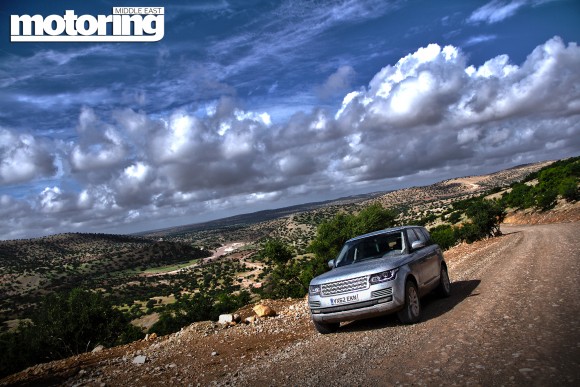
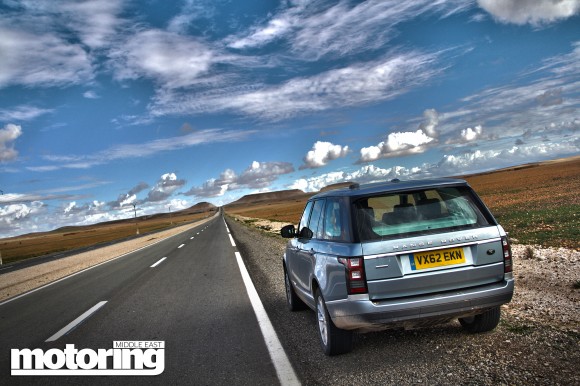
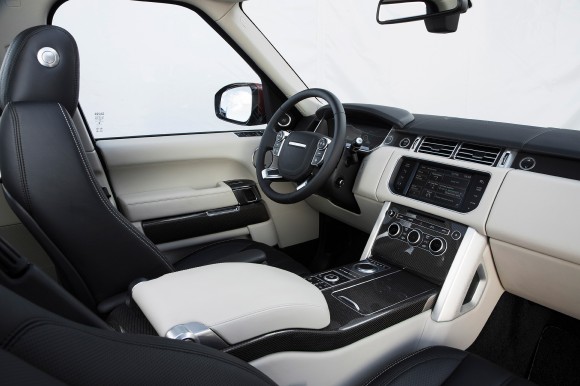
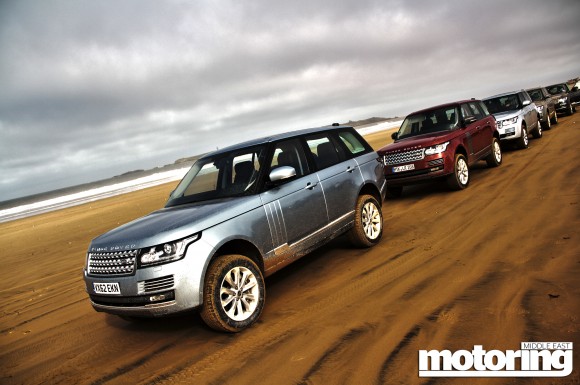
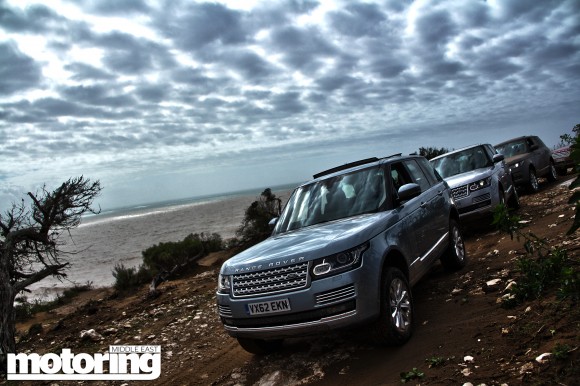
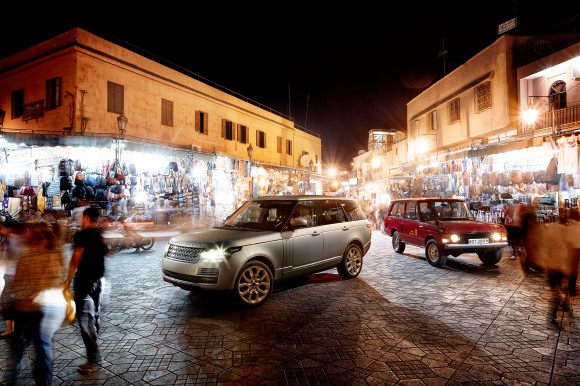
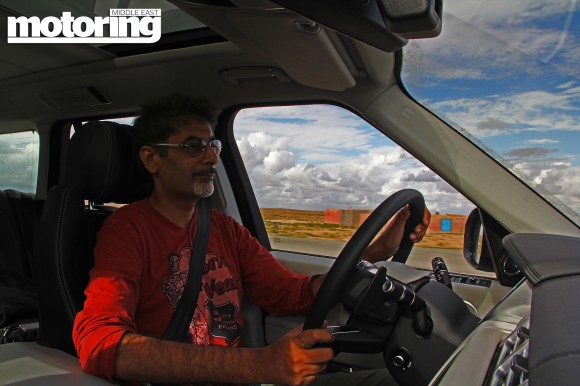


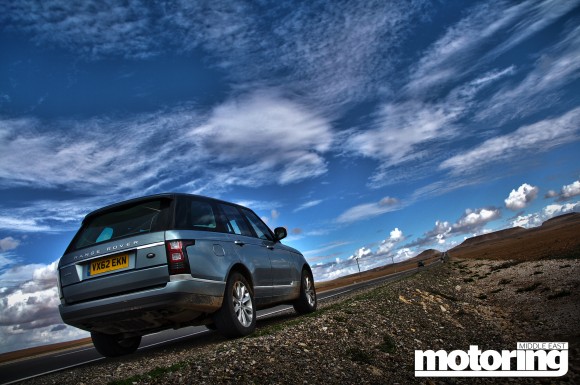
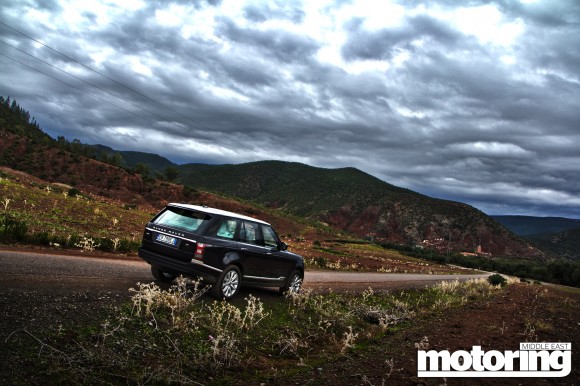
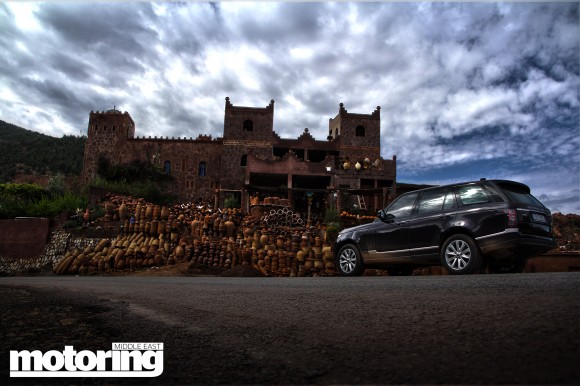
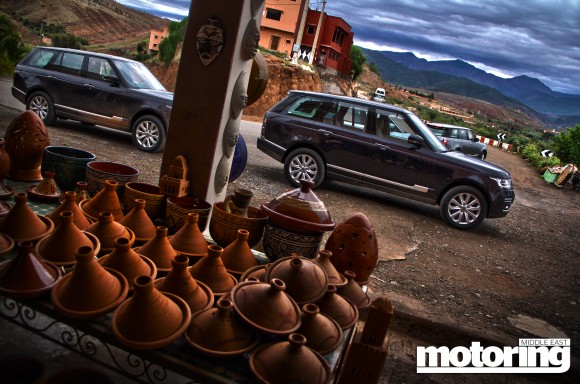
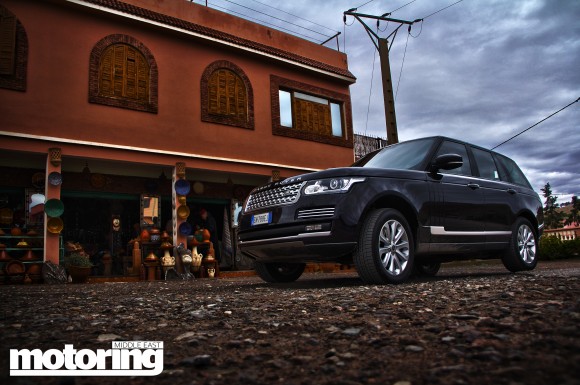
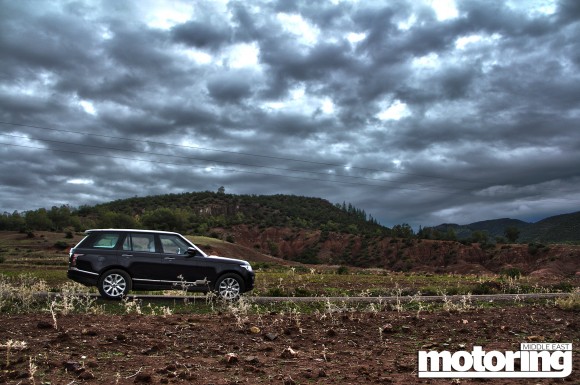
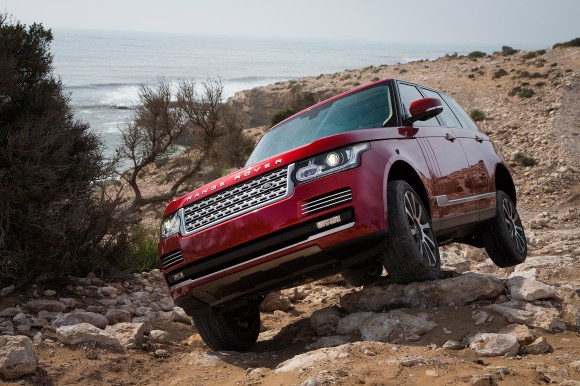
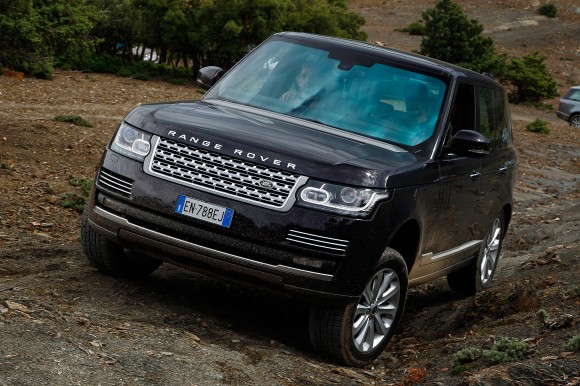

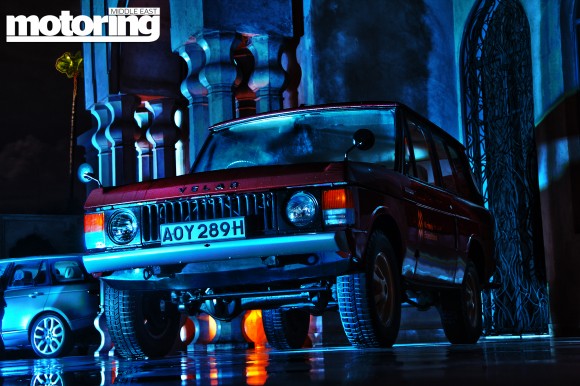































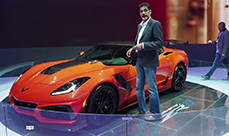

pls keep me advised